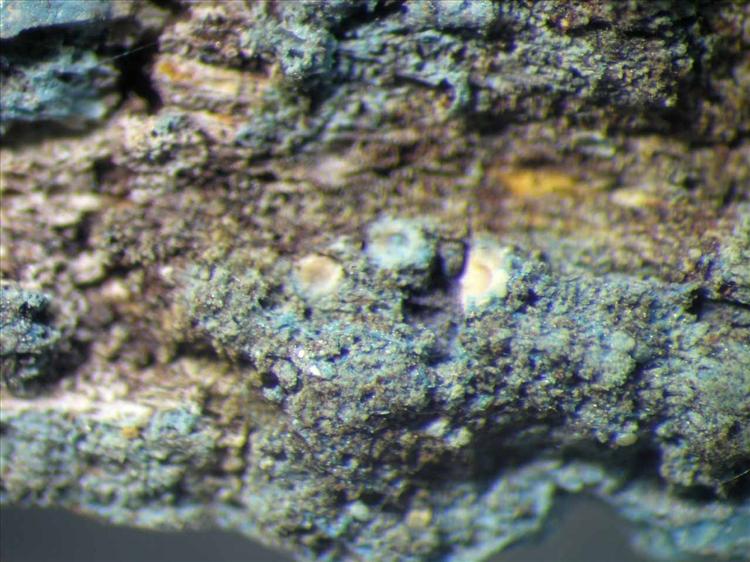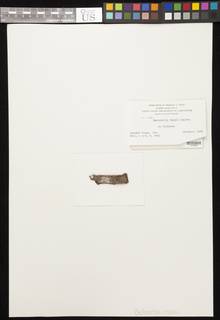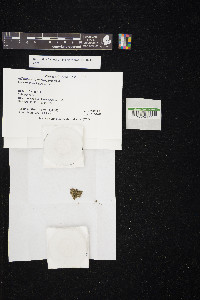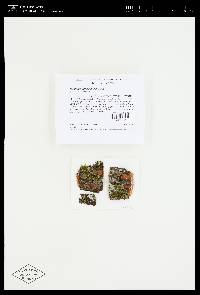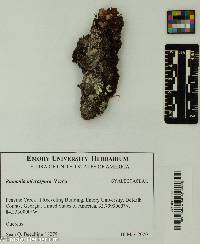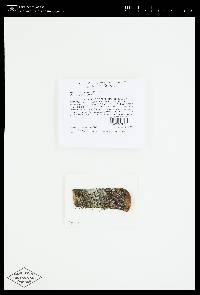
- Home
- Search
- Images
- Species Checklists
- US States: O-Z >
- US National Parks
- Central America
- South America
- US National Parks
- Southern Subpolar Region
|
|
|
|
Family: Gyalectaceae
[Biatorella rappii Zahlbr.] |
MB# 345766 TYPE. ARGENTINA. Jujuy prov. Laguna de la Brea, 1901 R.E. Fries s.n. (S, holotype). Description. Life form: lichenized fungus. Thallus crustose, thin, indistinct, bluish gray or as a yellowish or brownish stain on the substrate; prothallus indistinct or absent; vegetative diaspores absent. Photobiont Trentepohlia alga. Ascomata biatorine apothecia, scattered, 0.3-0.7 mm diam., immersed in the substrate, initially opening from a small pore which expands to reveal the disk; margins pale, often cracked or ragged with 6-7 pale pink, triangular lobes; disk concave, pale yellowish. Exciple hyaline; epihymenium hyaline; hymenium hyaline, not inspersed, 100-110 μm. Paraphyses ~2 μm thick (in K) with distinct septa and blunt terminal cells. Asci 70-90 x 8-10 μm, 60->100-spored; ascospores hyaline, simple, 6–8 × 3–4 μm, halonate. Chemistry. Spot tests negative; no substances detected by TLC. Substrate and Habitat. Corticolous on hardwood trees. Distribution. Neotropical to southeastern North America, possibly pantropical with additional records from Africa and southeast Asia (GBIF) and New Guinea (Aptroot 1998); in North Carolina found in the Coastal Plain ecoregion. Literature Aptroot, A. (1998) New lichens and lichen records from Papua New Guinea, with the description of Crustospathula, a new genus in the Bacidiaceae. Tropical Bryology 14: 25-34. Lendemer, J.C. & N. Noell. (2018) Delmarva Lichens: An illustrated manual. Memoirs of the Torrey Botanical Society 28: 1-386. Vězda, A. (1966) Flechtensytematische Studien III. Die Gattungen Ramonia Stiz. und Gloeolecta Lett. Folia Geobotanica et Phytotaxonomica 1(2): 154-175 (original description). |

